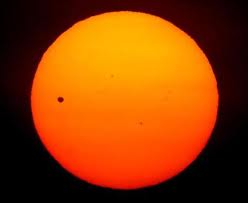World IPv6 Launch Day began on June 6th.
Global transition from Internet Protocol version 4 (IPv4) to Internet Protocol version 6 (IPv6) began on June 6th. In India 27 websites have been brought on IPv6 platform. Further, a direction has been issued to all the Government organizations to migrate their websites to IPv6 (dual stack) by December 2012. As IPv6 is not backward compatible with IPv4, the transition to IPv6 is likely to be a complex and long term exercise during which both IPv4 and IPv6 will co-exist. India has at present 35 million IPv4 addresses against a user base of about 360 million data users. In addition, Government is planning to have a target of 160 million and 600 million broadband customers by the year 2017 and 2020 respectively.
Global transition from Internet Protocol version 4 (IPv4) to Internet Protocol version 6 (IPv6) began on June 6th. In India 27 websites have been brought on IPv6 platform. Further, a direction has been issued to all the Government organizations to migrate their websites to IPv6 (dual stack) by December 2012. As IPv6 is not backward compatible with IPv4, the transition to IPv6 is likely to be a complex and long term exercise during which both IPv4 and IPv6 will co-exist. India has at present 35 million IPv4 addresses against a user base of about 360 million data users. In addition, Government is planning to have a target of 160 million and 600 million broadband customers by the year 2017 and 2020 respectively.
Moreover, there is a strong security requirement to provide unique IP address to each individual data user. In addition to addressing capacity, IPv6 also offers several other advantages over IPv4. IPv6 has been designed with many new features which make it possible to develop entirely new applications which are not possible in the IPv4 protocol e.g.Centralized Building Management System,Intelligent Transport Systems, Rural Emergency Health Care, Tele-education / Distance Education, Smart Grids etc. IPv6 is not just about addresses but about applications taking advantage of the new features built into the protocol. Read more about IPV6
Transit of Venus
From children to elders in all sections of society witnessed the Transit of Venus on June 6th which is among the rarest of predictable celestial phenomena. The Transit of Venus began at 5:22 am and finished at 10:22 am. The next pair of transits will occur on December 2117 and December 2125. Scientists, students, media and general public they all enjoyed the rare celestial event in full volume.
World Environment Day - June 5th
The World Environment Day is celebrated every year, to not only create awareness but also to reaffirm our commitment to protect and safeguard the environment for us and our future generations. It’s a call for a positive environmental action to save our planet from further degradation. As so rightly said: "Treat the earth well: it was not given to you by your parents, it was loaned to you by your children. We do not inherit the Earth from our Ancestors, we borrow it from our Children."(American Indian proverb).
Biodiversity on Wheels
In an effort to highlight the multifaceted dimension of biodiversity, the Ministry of Environment & Forests is flagging off the “Science Express- Biodiversity Special” - a collaborative initiative between the Ministry and the Department of Science & Technology. The train “Science Express” with the theme on Biodiversity, very clearly enunciates our commitment to the creating awareness on the diverse ecosystems that sustains us and way and means to conserve the same. The Science Express- Biodiversity Special- “Biodiversity on Wheels” is an exhibition. The train’s 8 coaches devoted to show-case the biodiversity of the country through different lens and include exhibits on bio-culture heritage, biodiversity-livelihoods linkages, and the also domestic biodiversity. The train also has four other coaches dedicated to climate change, biodiversity & water and energy conservation.
Galaxy S-III on the wheel
Samsung says it expects to capture 60 per cent share of the Indian smartphone market this year on the back of a slew of new devices, including its latest Galaxy S-III, priced at Rs.43,180. The much-awaited Galaxy S-III smartphone, powered by Android operating system 4.0, is touted as a strong competitor to the yet-to be launched iPhone 5 (expected to be launched later this year). Samsung Galaxy S-III comes with a 4.8-inch screen, bigger than its highly successful predecessor Galaxy S-II. The phone packs a bunch of features like ‘Smart stay', in which the device recognises when you are looking at the phone and maintains a bright display for continued viewing pleasure.
Air Force version of Akash missile
India successfully test-fired its indigenously developed surface-to-air ‘Akash’ missile of Air Force version, the fifth trial of the anti-aircraft system. The anti-aircraft missile has a strike range of 25 km and capable of carrying warhead of 60 kg.
SpaceX Dragon
The SpaceX Dragon capsule parachuted into the Pacific on 6th June 2012 to conclude the first private delivery to the International Space Station and inaugurate NASA’s new approach to exploration. The Dragon is a reusable spacecraft developed by SpaceX, a private space transportation company based in California. During its uncrewed maiden flight in December 2010, Dragon became the first commercially-built and operated spacecraft to be recovered successfully from orbit. On 25 May 2012, an uncrewed variant of Dragon became the first commercial spacecraft to successfully rendezvous with the International Space Station.






0 comments: